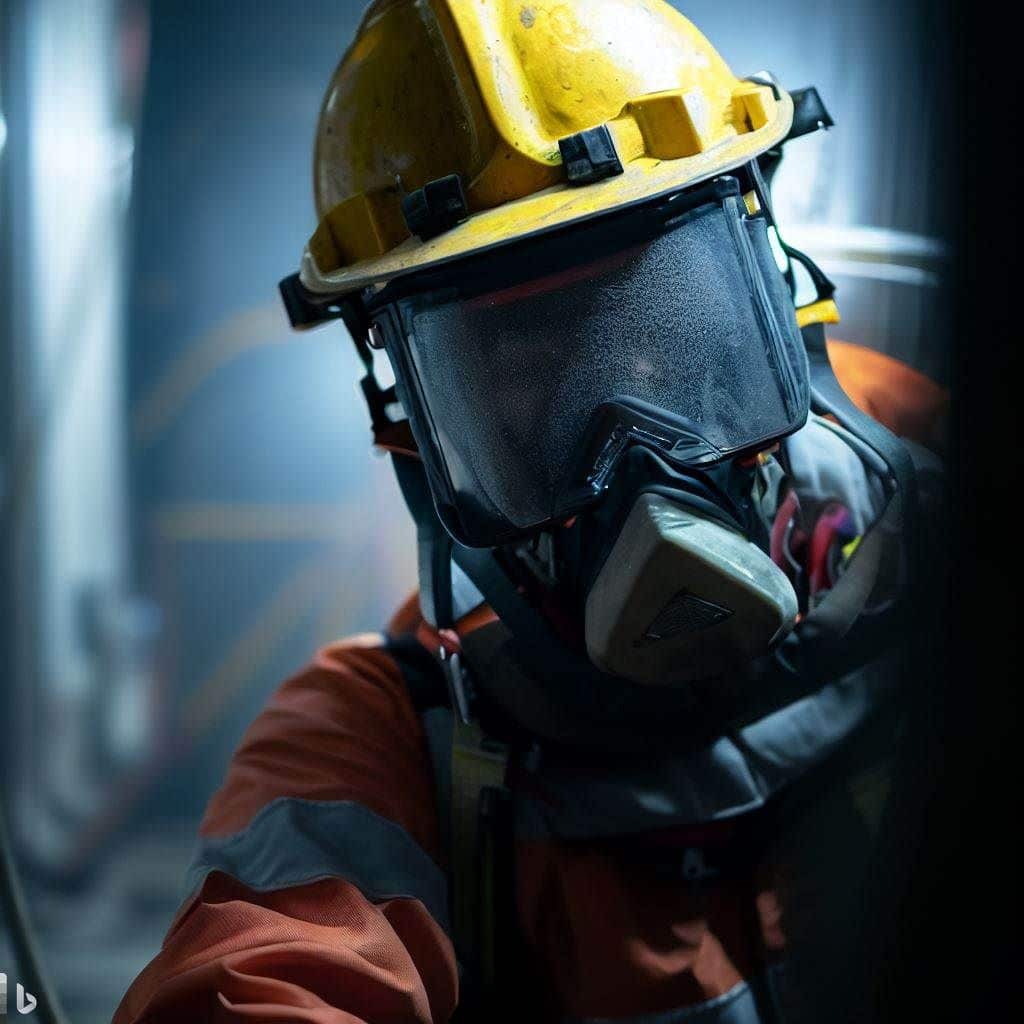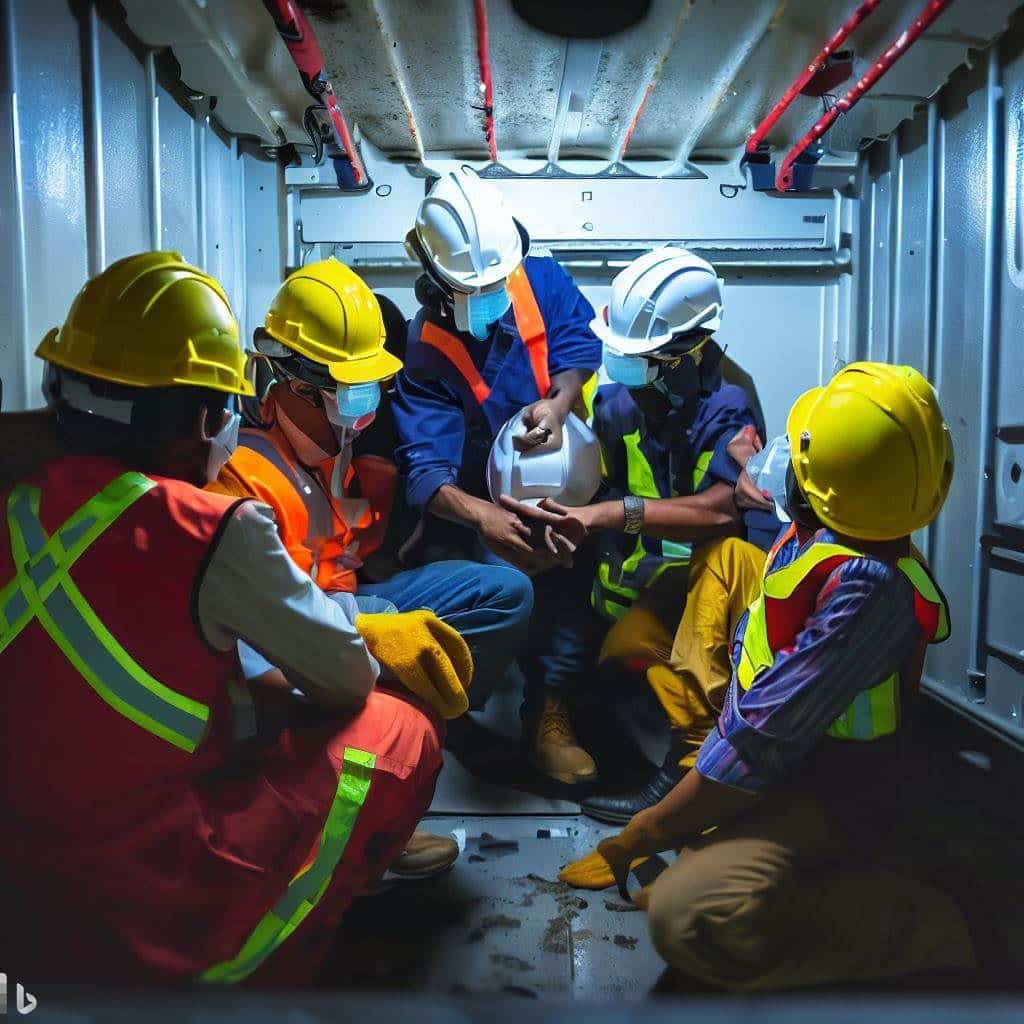Mastering Confined Space Training Levels: A Comprehensive Guide for Workplace Safety
Working in confined spaces presents a unique set of challenges and hazards that employees must be prepared to face. Confined space training levels are designed to equip employees with the necessary knowledge and skills to navigate these environments safely.
This comprehensive guide will provide an in-depth look at the various levels of confined space training, their importance for workplace safety, and tips for selecting the appropriate training level for your team.
As we delve into confined space training, it is important to understand the definition and types of confined spaces and the risks associated with working in such environments. This knowledge will lay the foundation for understanding the importance of proper training and the different levels available to ensure workplace safety.
Understanding confined spaces: Definition and types
A confined space is defined as an area not designed for continuous human occupancy, has limited means of entry and exit, and may contain dangerous air contaminants, engulfment hazards, or other physical risks. Confined spaces exist in various industries, including construction, manufacturing, and utilities.
There are two main types of confined spaces: non-permit and permit-required. Non-permit confined spaces do not contain or have the potential to contain hazards capable of causing death, serious injury, or acute illness. On the other hand, permit-required confined spaces possess one or more of the following characteristics:
- Contains or has the potential to contain a hazardous atmosphere.
- Contains a material with the potential for engulfment.
- It has an internal configuration that could trap or asphyxiate an entrant.
- Contains any other recognized serious safety or health hazard.
Understanding the differences between these types of confined spaces is crucial for determining the appropriate level of training required for employees working in these environments.

Importance of confined space training for workplace safety
Confined space training is essential for maintaining workplace safety for several reasons. Firstly, it ensures that employees know the potential hazards of working in confined spaces and can identify such spaces in their work environment. This knowledge helps to prevent accidents and injuries that may result from a lack of awareness or understanding of the dangers present in confined spaces.
Secondly, confined space training equips employees with the skills and knowledge to enter, work in, and exit confined spaces safely. This includes understanding the proper use of personal protective equipment (PPE), emergency procedures, and hazard control measures.
By mastering these skills, employees are better prepared to handle the challenges they may face while working in confined spaces, ultimately reducing the risk of accidents and injuries.
Lastly, confined space training is also crucial for ensuring compliance with relevant regulations and standards, such as the Occupational Safety and Health Administration (OSHA) regulations in the United States. Failure to comply with these regulations can result in fines, penalties, and legal repercussions for employers and employees.
Overview of confined space training levels
Three main confined space training levels are entry-level, advanced, and supervisor-level. Each level is designed to address the specific needs and responsibilities of employees working in confined spaces, with more advanced levels building upon the foundational knowledge and skills acquired in previous levels. The following sections will explore these levels in detail, outlining their key components and learning outcomes.
Entry-level confined space training
Entry-level confined space training is designed for employees new to working in confined spaces or with limited experience. This training provides a solid foundation of knowledge and skills that will enable employees to enter, work in, and exit confined spaces safely.
Key components of entry-level confined space training include:
- Understanding the definition and types of confined spaces.
- Identifying potential hazards associated with working in confined spaces.
- Learning the proper use of PPE and other safety equipment.
- Familiarizing employees with entry and exit procedures and emergency response protocols.
Upon completion of entry-level confined space training, employees should be able to demonstrate a basic understanding of confined space hazards and safety precautions and the ability to perform their job duties within these environments safely.
Advanced confined space training
Advanced confined space training builds upon the foundational knowledge and skills acquired in entry-level training, offering a more in-depth exploration of topics related to confined space safety. This level of training is ideal for employees who have experience working in confined spaces and are looking further to develop their skills and expertise in this area.
Key components of advanced confined space training include:
- Detailed analysis of confined space hazards and risk assessment techniques.
- Advanced hazard control measures and strategies for maintaining a safe work environment.
- In-depth instruction on using specialized equipment, such as gas monitoring devices and ventilation systems.
- Training on rescue techniques and procedures, including retrieval systems and rescue equipment.
Upon completing advanced confined space training, employees should be well-equipped to handle more complex and hazardous confined space environments and assist in rescue operations if necessary.
Supervisor-level confined space training.
Supervisor-level confined space training is designed for individuals overseeing and managing employees working in confined spaces. This level of training focuses on developing leadership skills and the ability to effectively manage confined space operations to ensure the safety of all team members.
Key components of supervisor-level confined space training include:
- Understanding the roles and responsibilities of a confined space supervisor.
- Developing effective communication and decision-making skills for managing confined space operations.
- Implementing and enforcing confined space safety policies and procedures.
- Overseeing hazard assessment and control measures and ensuring proper PPE and other safety equipment use.
Upon completion of supervisor-level confined space training, individuals should be well-prepared to take on the role of a confined space supervisor, ensuring the safety and well-being of their team members while working in confined spaces.
Selecting the appropriate confined space training level for your team
When selecting the appropriate confined space training level for your team, it is important to consider each employee’s specific needs, responsibilities, and prior experience and knowledge.
Employees new to working in confined spaces or having limited experience should begin with entry-level training to establish a solid foundation of knowledge and skills. As employees gain more experience and take on additional responsibilities, they may benefit from advancing to specialized training, such as advanced or supervisor-level training.
In some cases, it may be beneficial to provide employees with training beyond their current level of responsibility to prepare them for future roles or enhance their understanding of confined space safety. Ultimately, the goal is to ensure that each employee has the appropriate level of training to safely and effectively perform their job duties within confined spaces.

Tips for effective confined space training implementation
To ensure the success of your confined space training program, consider the following tips for effective implementation:
- Choose a reputable training provider with experience delivering confined space training at various levels.
- Customize the training program to address your workplace’s specific needs and hazards.
- Schedule regular refresher training to maintain and update employees’ knowledge and skills.
- Establish a strong safety culture within your organization by promoting open communication and continuous learning.
- Monitor and evaluate the effectiveness of your confined space training program, making adjustments as necessary to improve its overall impact on workplace safety.
Conclusion: Enhancing workplace safety through confined space training
In conclusion, mastering confined space training levels is essential for ensuring the safety of employees working in confined spaces. By understanding the different training levels available and selecting the appropriate level for their team, employers can greatly reduce the risk of accidents and injuries, maintain compliance with relevant regulations, and foster a safety culture within their organization.
By implementing effective training programs and promoting continuous learning, businesses can help to protect their employees and maintain a safe and productive work environment.
Frequently Asked Questions:
What industries typically require confined space training?
Confined space training is commonly required in construction, manufacturing, utilities, and oil and gas industries. Any workplace with confined spaces that employees may need to enter should consider implementing a confined space training program.
How often should confined space training be conducted?
OSHA recommends that confined space training be conducted at least annually or whenever there are changes in confined space operations, personnel, or equipment. Additionally, refresher training should be provided if an employee’s performance indicates a need for retraining.
Can confined space training be conducted online?
While some aspects of confined space training can be delivered through online courses, it is important to ensure that employees also receive hands-on, practical training to develop the skills necessary to work in confined spaces safely. A combination of online and in-person training is often an effective approach.
What is the role of a confined space supervisor?
A confined space supervisor oversees and manages confined space operations, including employees’ entry, work, and exit in confined spaces. This includes ensuring that proper safety precautions and procedures are followed, as well as coordinating rescue efforts in the event of an emergency.
Are there any certifications available for confined space training?
Several organizations offer certification programs for confined space training, such as the National Association of Safety Professionals (NASP) and the Board of Certified Safety Professionals (BCSP). Certification can help demonstrate an individual’s expertise and commitment to safety in confined spaces.
